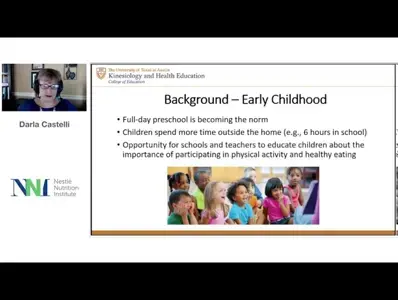NNIW95: Importance of Providing Opportunities for Health Behaviors during the School Day
Today, children are less active than previous generations leading to increased prevalence of morbidity associated with physical inactivity (1). Globally, full-day preschool is rapidly becoming the norm. Thus, the amount of time that a child spends outside the home is an opportunity for schools and teachers to educate children about the importance of participating in physical activity and making healthy eating choices. “Health and education affect individuals, society, and the economy and, as such, must work together whenever possible. Schools are a perfect setting for the collaboration” (2). One such approach is called Whole School, Whole Community, and Whole Child which intertwines academic success and prevalence of healthy behaviors, such as being regularly physically active and eating healthy. Particularly for adolescent children, multi-component approaches that include both school and family or community involvement have the most significant potential to make meaningful differences in the rate of physical activity participation (3). Further, school policies, administrative support modeling by teachers, and use of cues and incentives can have a positive effect (4). The purpose of the paper is to describe the benefits of contemporary, evidenced-based models for providing opportunities for health behaviors in school from early childhood to adolescence.
If you liked this post you may also like

